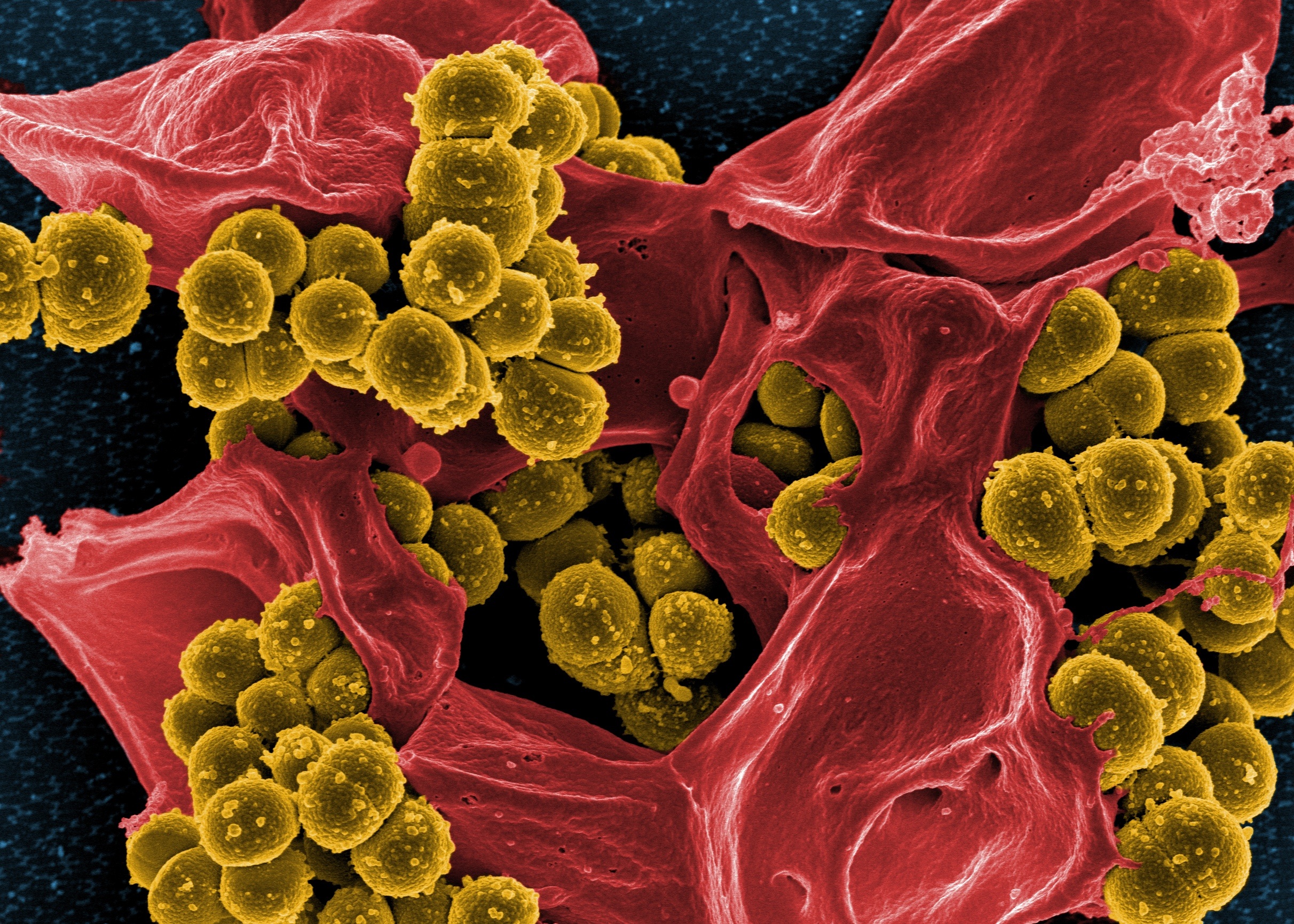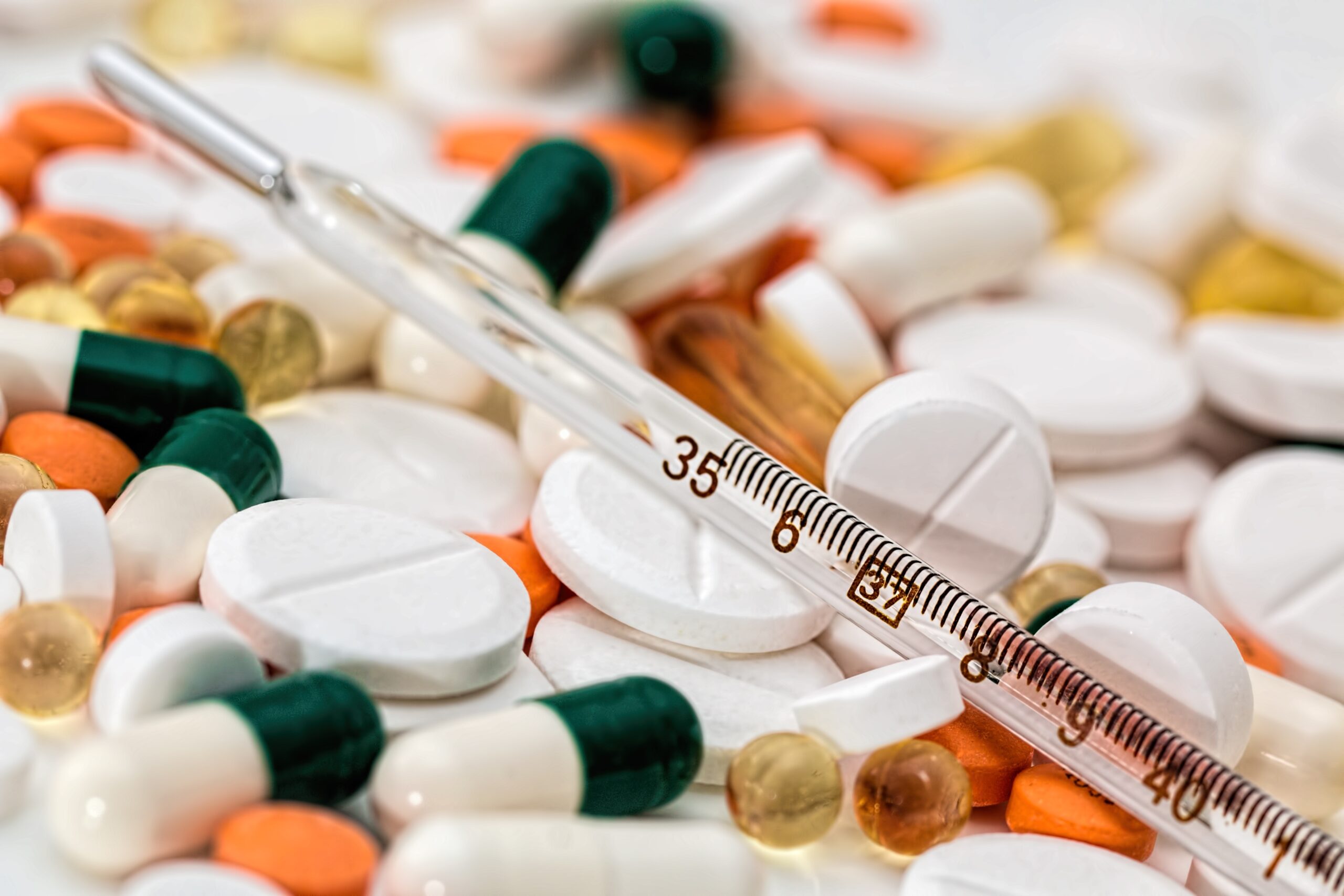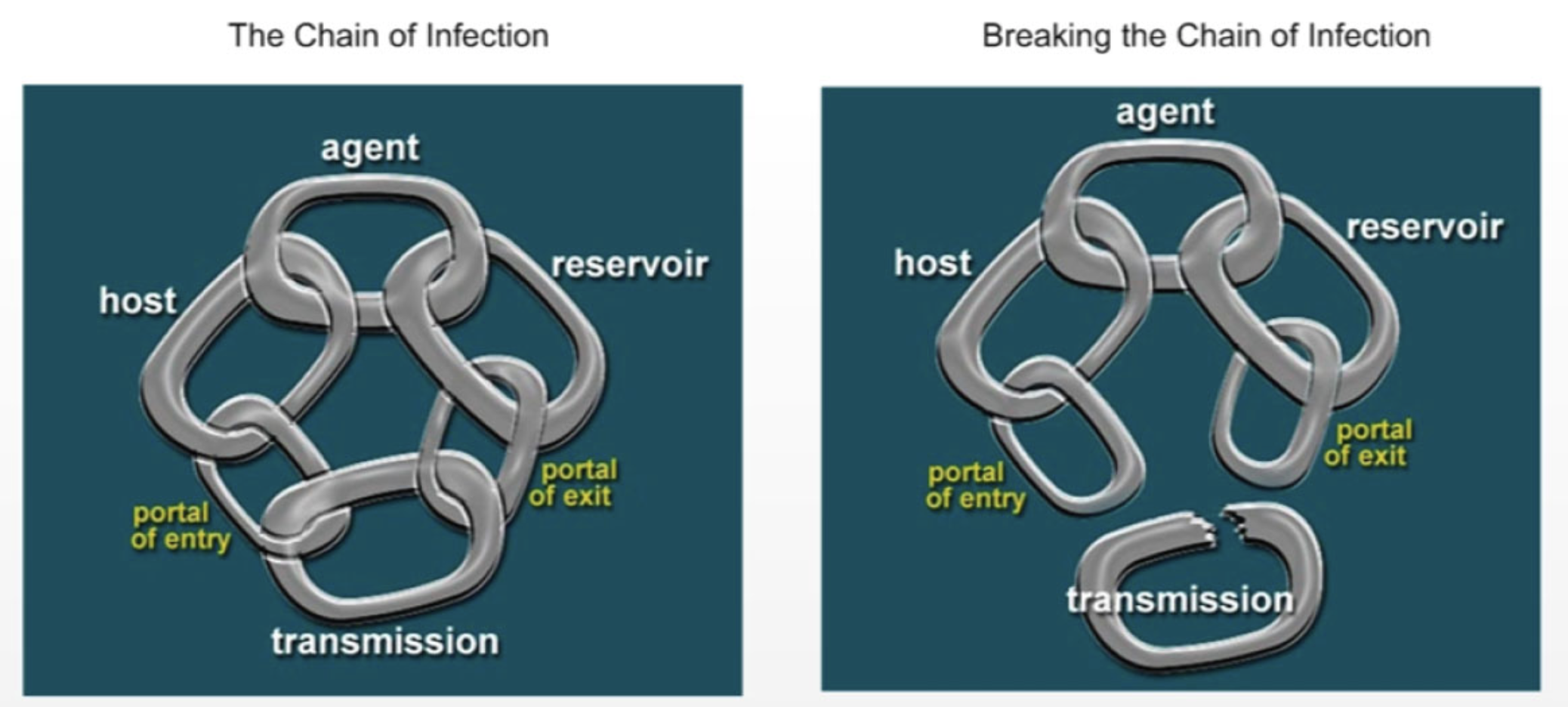2.2 Infections
What Is an Infection?
An infection is any illness caused by the growth of a pathogen on, or in, a person. These pathogens can be bacteria, viruses, or fungi. The common cold is caused by a virus, and so is influenza (the flu), and COVID-19.
Infections can range from fairly minor, like coughs and colds, to more serious ones, like septicemia (blood poisoning) and wound infections. Infections can spread quickly unless certain measures are taken.

When a pathogen is commonly found on our body without causing an illness, we call it colonization. People who are colonized will have no signs or symptoms; they feel fine. In certain circumstances, pathogens may go further to cause an infection. For example, Escherichia coli (E. coli) is a common species of bacteria found naturally in the intestine, where it helps produce vitamins K and B. While most strains of E. coli are harmless to humans, they can cause gastrointestinal problems like diarrhea, and in more severe cases, bacterial meningitis or pneumonia.
Some people are more at risk for infection because their immune systems are weakened. Clients with certain health conditions — those with diabetes, heart and skin diseases, or those with a weaker immune system — are also more at risk for infections.

Resident and Transient Flora

Not all germs cause infections! Billions of bacteria live in or on our bodies. This is normal and healthy, as these germs are part of the body’s resident flora. The parts of the body they typically colonize include the surface of the skin, mucous membranes (eyes, nose, mouth), digestive tract (gut, bowel), and upper respiratory system (mouth, nose and throat). These pathogens do not cause harm.
Transient flora are just passing through. Although they may attempt to colonize the same areas of the body as the resident flora, transient germs cannot remain in the body for extended periods.
This is due to:
- Competition from resident flora
- Elimination by the body’s immune system
- Physical or chemical changes within the body that discourage the growth of transient germs
How Infections Occur
Under normal conditions, neither resident nor transient pathogens cause harm. However, if the opportunity arises, some of these pathogens are able to cause infections. This can happen due to various conditions, including:
- When the immune system isn’t working properly, normal flora can overpopulate or move into areas of the body where they do not normally live.
- When the balance of normal pathogens is disrupted — for example, when a person takes broad-spectrum antibiotics — transient pathogens that are usually crowded out by resident pathogens have an opportunity to take over. Tougher, or antibiotic-resistant bacteria, can get the upper hand.
- Disease can result when normal flora can enter an area of the body that they do not normally get into. Catheters or surgical wounds can allow pathogens into areas of the body that are normally sterile.

Chain of Infection
The chain of infection is a way of describing how an infection spreads from one person to another. Let’s say an infectious germ is living and multiplying in a person. The person coughs into their hand, then touches a door handle, leaving pathogens there. Another person touches the door handle, then touches their eyes, nose, or mouth. The pathogens have just found a way into the next person, completing the chain of infection.
Breaking the Chain of Infection
The development of an infection involves a set of complex interrelationships between the source of the microorganism, the susceptible host, and the environment. For infection to occur, it requires the transmission of microorganisms from the source to a susceptible host. One way to understand this complex connection is the chain of infection, which can have six links: the infectious agent, reservoir, portal of exit, mode of transmission, portal of entry and susceptible host (see Figure 2.2.5). Breaking any one of the links in the chain of infection will prevent infection from occurring.

Critical Thinking Question
What are some ways you could break the chain of infection and thereby reduce your chances of infection?
Match the words with the chain of infection:
- Mode of transmission:
- Pathogen:
- Portal of entry:
- Portal of exit:
- Reservoir:
- Susceptible host:
Options:
- Direct contact, air, medical instruments, other objects, other vectors
- Bodily fluids, respiratory droplets
- People, inanimate objects
- Microorganisms, such as bacteria, fungi, viruses, prions, protozoa, worms
- Client, health care worker
- Open wounded, nasal cavity, mucus membranes
Image descriptions
Figure 2.2.5a and 2.2.5b The chain of infection
Figure 2.2.5a shows the chain of infection, a framework for understanding the complex relationship between infection and host during transmission. The chain can have six links: the infection agent, reservoir, portal of exit, mode of transmission, portal of entry and susceptible host.
Figure 2.2.5b shows that breaking any of the links in the chain of infection, as shown in Figure 2.2.5a, will prevent an infection from occurring.
[Back to Figure 2.2.5]
The invasion of the body tissues by pathogens, allowing them to multiply and cause a reaction of the immune system to their presence of the toxins they produce.
A microorganism, such as a virus, bacterium, or fungus, that can cause disease.
Single-cell microorganisms that are typically a few micrometres in length and have several shapes, ranging from spheres to rods and spirals. Bacteria are present in most habitats, including soil and water. In the human body, bacteria outnumber human cells ten to one. The majority of them do not make us sick; in fact, our bodies give them a place to live, and many of them keep us alive.
Infectious agents that reproduce inside the living cells of other organisms. They are unable to reproduce on their own but require the mechanisms of living cells to do so. Examples are influenza or COVID-19 in humans.
A member of a large group of organisms that includes microorganisms such as yeasts, moulds, mushrooms. Many fungi (mainly yeasts and moulds) live in our environment and on our bodies. Most of the organisms don’t cause illness unless they can invade areas where they are not normally found, such as in the lungs or under the skin.
Microscopic, sometimes single-cell organisms including bacteria, fungi and viruses. A small proportion are pathogenic, meaning they can cause disease.

